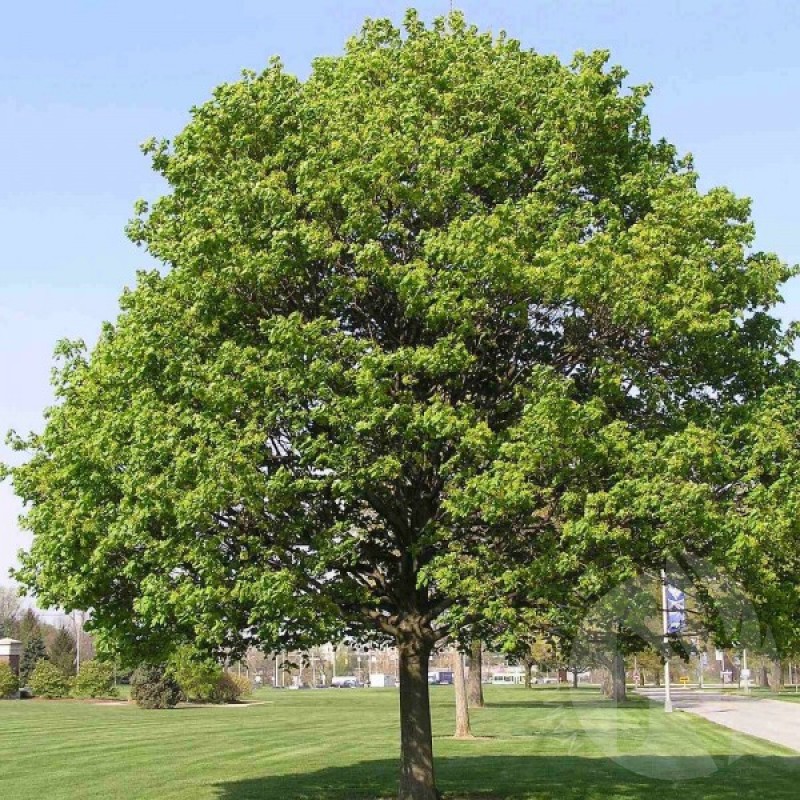
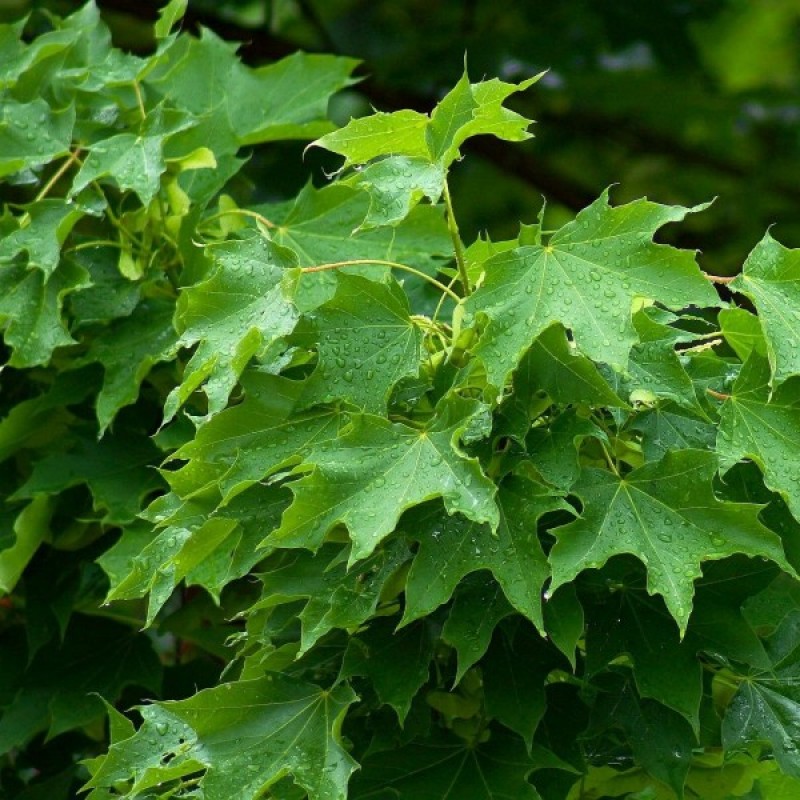
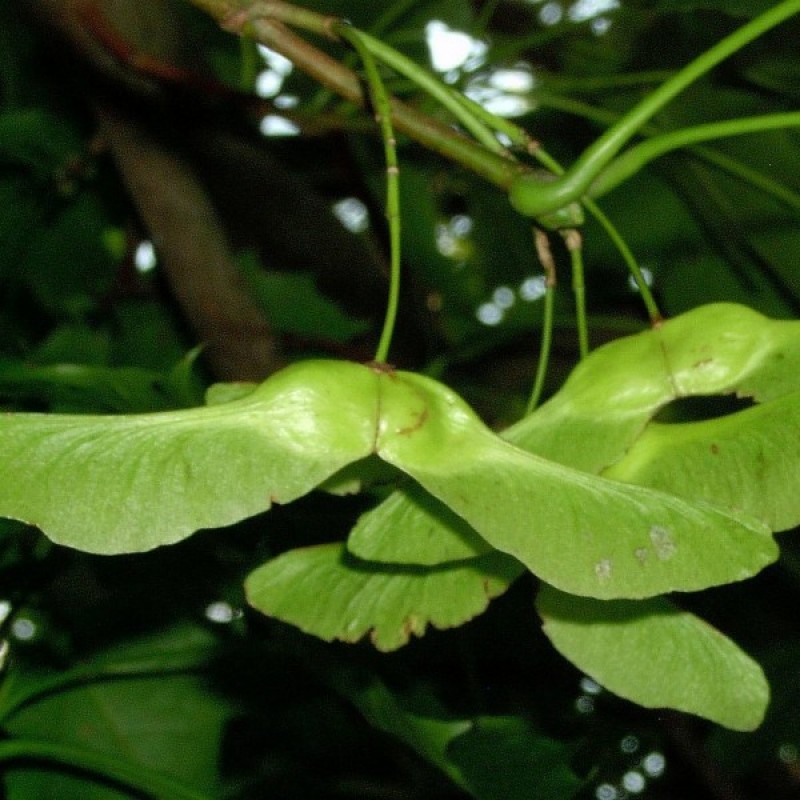

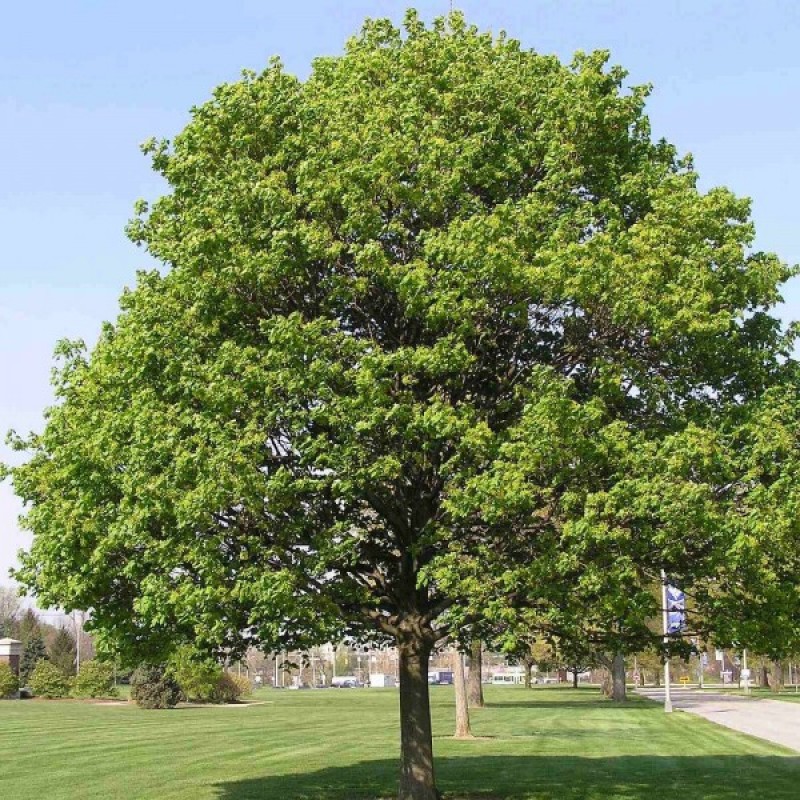
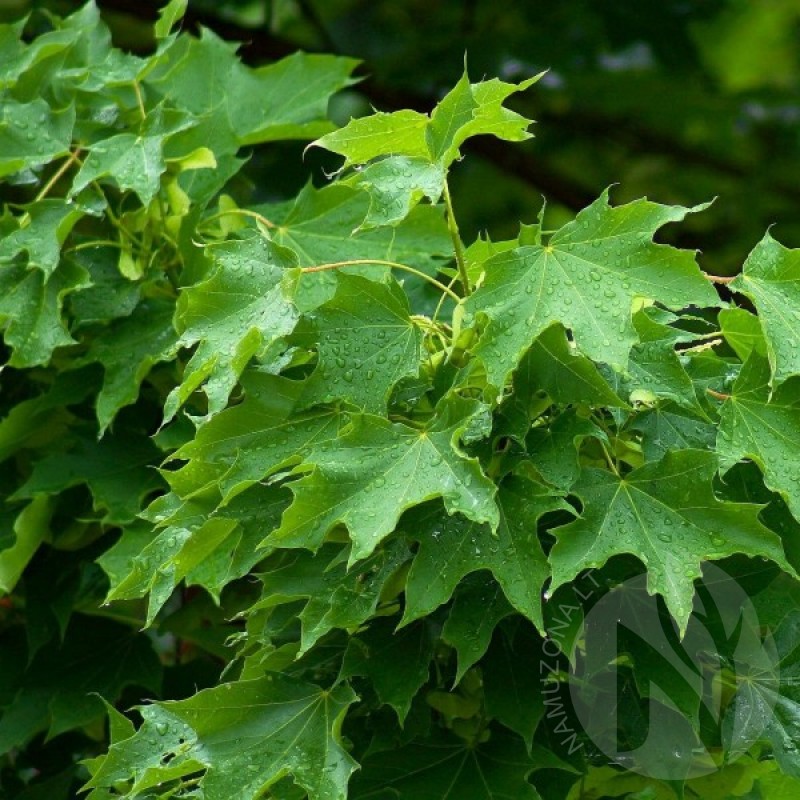
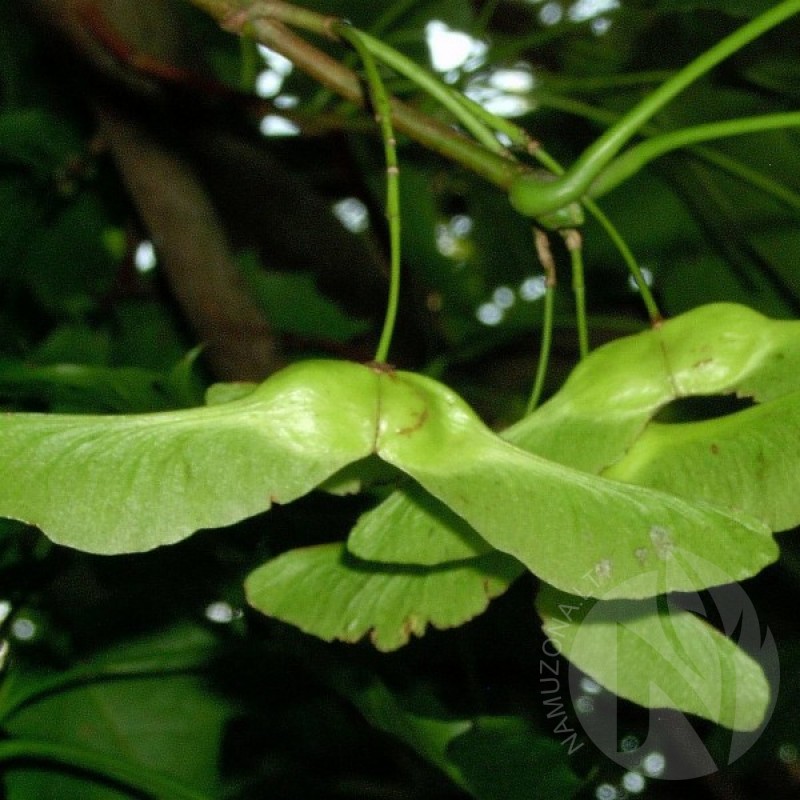
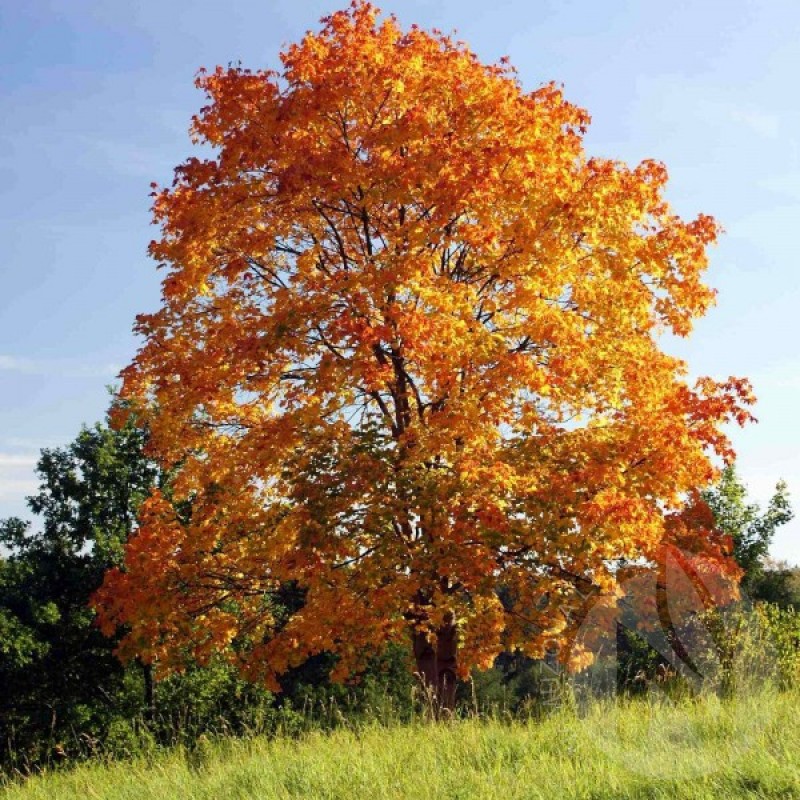
PAY ATTENTION!
All seeds (except SOLD OUT) are available for immediate shipping and will be dispatched within 1-2 business days.
INFORMATION NEEDED? PLEASE CONTACT US NOW!
Norway Maple was introduced from Scandinavia in the seventeenth century, and has since enriched Britain’s scenery with its bright spring blossom and rich autumn foliage.
The twigs are stout and shiny, generally tinged with red before turning brown. The small winter buds are set oppositely, and are bluntly pointed, with shiny reddish-tinged scales. The leaves when unfolding show rust-red tints. They are palatably five-lobed, sharply angled, bright green, rather shiny, with a long slender stalk which is tinged with red and contains milky sap. In autumn the leaves show a standard good yellow, and later brilliant orange-brown colors for a brief spell.
The greenish-yellow flowers of both sexes are found together in an erect or spreading inflorescence in the form of a corymbs panicle, and appear in early April before the leaves unfold. The fruit consists of two winged seeds are green at first, becoming brown before they spin away.
The bark is thin, dark grey to brown, with short, smooth, narrow, and shallow fissures. The wood is white or grayish, fine-textured, hard and fairly heavy. It is used for furniture and turnery goods. If cut when dormant in winter and early spring the tree freely ‘bleeds’ its sugary sap.
Foresters sometimes cultivate Norway Maple for timber, but more often their chief objective is to form with its an attractive belt around other tree-crops. Unfortunately it suffers much harm, particularly in the crown, from the grey squirrel, which is attracted be its sweet sap.
Information source: http://treesplanet.blogspot.com.es
Genus - Acer
Species - Platanoides
Common name - Norway Maple
Pre-Treatment - Required
Hardiness zones - 4 - 7
Height - 40'-50' / 12 - 15(25) m
Spread - 30'-40' / 9 - 12 m
Plant type - Medium Tree
Vegetation type - Deciduous
Exposure - Full Sun, Partial Sun, Partial Shade
Growth rate - Fast
Soil PH - Acidic, Neutral, Alkaline
Soil type - Clay, Loam, Sand, Well Drained
Water requirements - Average Water
Landscape uses - Feature Plant, Shade Trees, Street Trees
Bloom season - Early Spring, Spring
Leaf / Flower color - Green, Dark green / Lemon Yellow, Yellow Green, Chartreuse
GERMINATION INSTRUCTIONS
1. Start the cold stratification process in the end of the beginning of the year.
2. Place the seeds in a glass bowl and cover with room temperature water. Allow the seeds to soak for a minimum of 24 hours.
3. Hold a handful of sterile peat planting medium under a running faucet until the peat is soaked. Squeeze most of the water out of the peat, leaving it moist but not soggy. Place the moist peat into a zip-lock plastic bag.
4. Remove the seeds from the bowl of water and rinse them off under clean running water. Place up to three seeds into the plastic bag containing the peat. Use more peat and plastic bags if you want to germinate more than three seeds.
5. Push the seeds into the peat and seal the plastic bag. Shake the bag to distribute the peat so that it covers the seeds completely. The seeds must be buried in the moist peat in order to germinate.
6. Place the sealed bag in the bottom of the refrigerator. This will serve as the cold stratification. The seeds need to be kept at +4-+7C (34-46F) for 90 days.
7. Open the plastic bag periodically to make sure the peat is still moist. Add water as needed to restore the moisture.
8. Check the weather forecast after 35 days. You can plant the seeds outdoors if all danger of frost has passed. You can wait up to 55 more days, if there is still a possibility of frost and plant the seeds as late as early summer.
9. Plant the seeds by removing them from the peat and rinsing them with clean water. Bury the seeds ensuring that the seeds are covered. Keep the soil moist until the seeds sprout.
No questions about this product.







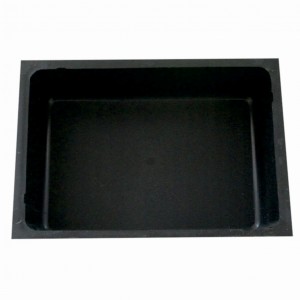


I followed the instructions and had an excellent germination rate despite the seeds being germinated late.